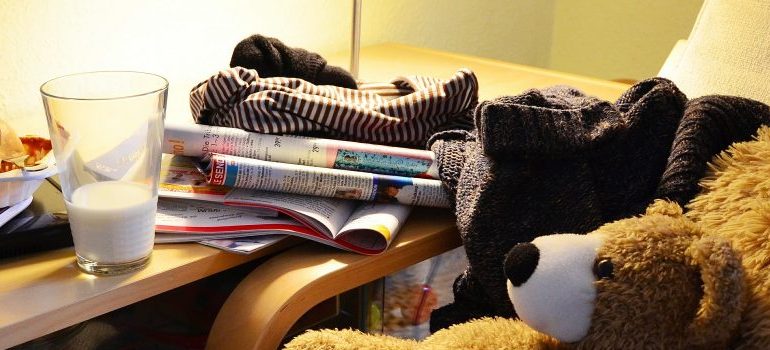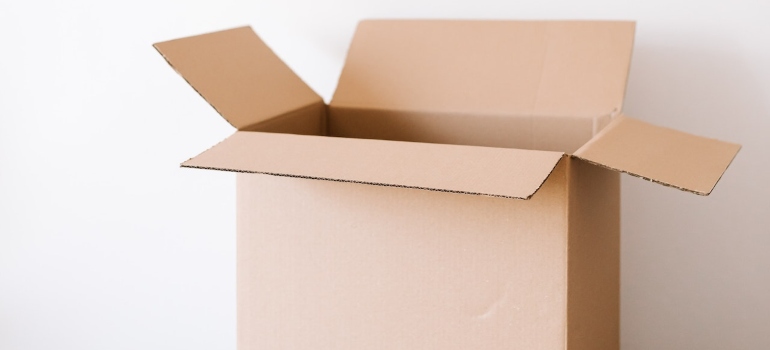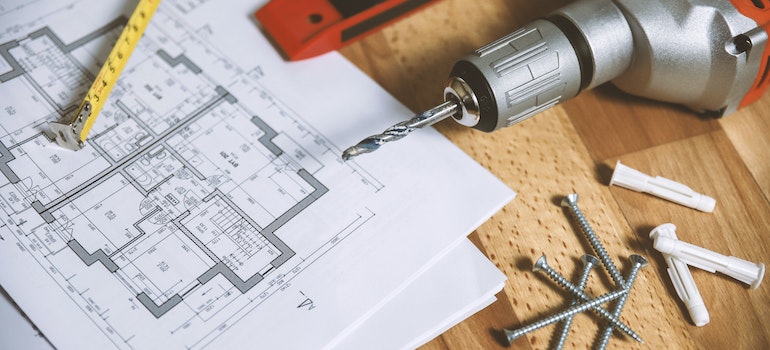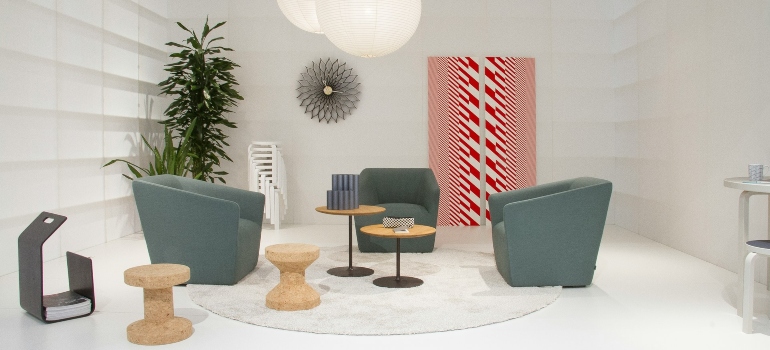How to Avoid Clutter After Moving
Moving to a new home brings the perfect opportunity to start fresh and create a clutter-free living environment. Yet, keeping your home free from clutter is often easier said than done. Many people struggle with holding onto items they no longer need because they feel emotionally attached to them or believe they might be useful someday. If you’re about to relocate, now is the ideal time to take control of your living space and declutter before you settle into your new home. However, achieving a clutter-free space takes planning and dedication. The process begins even before moving day. With practical tips from one of the best Idaho moving companies around, you can avoid clutter after moving and maintain an organized home long after the move is complete.
Essential Steps to Keep Your New Home Clutter-Free
Creating a clutter-free home after moving doesn’t happen by accident. It requires planning and a thoughtful approach to how you handle your belongings both before and after the move. Simply by taking the time to establish good habits, you’ll create a more organized space where you can feel at ease. Following key tips can help ensure that your new home remains free of unnecessary items. Here are five essential steps to avoid clutter after moving:
- Declutter Before You Move
- Manage Moving Supplies After Relocation
- Establish New Habits to Maintain a Clutter-Free Home
- Design Your Space for Organization
- Embrace Minimalism
- Develop a Regular Cleaning and Decluttering Routine
With these steps in place, you can prevent clutter from accumulating and start fresh in your new home. The key is not just decluttering once but maintaining an intentional mindset about what you bring into your space moving forward. When done consistently, these strategies will help you keep your home organized and peaceful.
Step 1: Declutter Before You Move
The secret to avoiding clutter after your move lies in the preparation you do before packing. Think about it – how can you expect to maintain a tidy home if you’re bringing all the unnecessary items from your old place into your new one? It’s common to accumulate extra kitchenware, outdated electronics, old clothes, and more. Now is the perfect time to evaluate whether you truly need all those things.

Instead of packing everything, take this opportunity to sort through your belongings and make intentional decisions about what to keep. The fewer things you bring into your new home, the less clutter you’ll have to manage later on. Not to mention how much cheaper it will be to relocate your items with the help of local movers in Boise once you get rid of a bunch of things. So, consider these helpful questions to guide you through the decluttering process:
- When was the last time you used this item?
If it’s been more than a year, or if you can’t even remember using it, you probably don’t need it. - Is the item collecting dust?
Run your finger across the item. If it’s covered in dust, it’s a clear sign that it hasn’t been used in a while. Don’t hesitate to let it go.
Once you’ve decided what you no longer need, you can choose how to deal with those items. Here are your options:
- Donating: If the items are in good condition, consider donating them to a local charity.
- Selling: You could sell items online or host a garage sale to make a little extra money for your move.
- Discarding: Anything that’s broken or worn beyond use should be thrown away.
Being proactive before your move will reduce the amount of stuff you have to pack and make unpacking at your new home more efficient. Once you’ve settled in, managing your moving supplies becomes the next crucial step to maintaining an organized, clutter-free space.

Step 2: Managing Moving Supplies After Relocation
Once you’ve successfully moved and unpacked, you’re often left with an overwhelming amount of moving supplies, especially cardboard boxes, bubble wrap, and packing paper. While it might be tempting to throw these materials into storage or a closet, that will only create more clutter. Instead, find ways to reuse, recycle, or repurpose packing supplies in Boise. Cardboard boxes, for example, can serve several purposes beyond moving. So, here are some effective ways to handle extra boxes and supplies.
- Repurpose: Consider using cardboard boxes for storage in your garage or attic. Alternatively, you can get creative and transform them into playhouses for kids, storage bins, or even pet beds.
- Donate: If you know someone who is moving soon, offer your packing materials to them. You’ll be helping someone else while decluttering your own space.
- Recycle: Most cities have recycling programs that accept cardboard and other packing materials. Make sure to break down your boxes before taking them to the recycling center.
Tackling your moving supplies immediately helps you avoid letting them pile up in your new home, where they can quickly become a source of clutter. To keep your space organized long-term, the next step is to establish new habits that help maintain a clutter-free home.
Step 3: Establish New Habits to Avoid Clutter After Moving
Starting fresh in a new home offers the opportunity to develop better habits that will help you avoid clutter in the long run. While decluttering before the move is essential, it’s equally important to maintain good habits afterward to prevent clutter from accumulating again. You can start with these:
- Shop with Intention: After the move, resist the urge to go shopping for new items, especially decor or things you don’t need immediately. Ask yourself whether each new purchase will truly add value to your home. Avoid impulse buys that will later turn into clutter.
- One In, One Out Rule: For every new item you bring into your home, make a habit of getting rid of one old item. This rule helps keep your belongings in check and prevents clutter from building up.
- Schedule Regular Decluttering Sessions: Set aside time every few months to review your possessions and get rid of anything you no longer use. Decluttering isn’t a one-time process; it requires regular upkeep.
- Create a System for New Items: Establish designated storage areas for new items, and make sure they fit into the existing structure of your home. Don’t let things pile up without a purpose or place.
Implementing these habits early on will help you create an environment that stays organized and free from unnecessary items. It will make it easier to maintain a clutter-free home in the long run, saving you both time and stress. The next step involves designing your space for organization, ensuring every item has its place and your home remains functional and tidy.

Step 4: Design Your Space for Organization
A clutter-free home starts with smart design and organization. How you arrange your furniture, decor, and storage solutions can make a big difference in how easily you can maintain a clean space. When planning your new home’s layout, keep organization in mind. Here are some tips for designing a clutter-free home:
- Maximize Storage: Invest in furniture that doubles as storage, such as ottomans with hidden compartments or beds with built-in drawers. Use quality furniture installation services to make sure every item in your home has a designated spot where it can be stored out of sight.
- Use Vertical Space: Shelves, hooks, and wall-mounted organizers can help you utilize vertical space, which is often overlooked. This not only helps reduce clutter on countertops and floors but also adds to the functionality of your space.
- Limit Decorations: While it’s tempting to fill every empty surface with decor, try to keep it simple. A few meaningful pieces will make your space feel more open and less cluttered.
Designing your space with organization in mind enhances the functionality of your home and makes it easier to keep things tidy in the long run. Maximizing storage, utilizing vertical space, and limiting unnecessary decorations help create an environment that promotes order and simplicity. Thoughtful design choices allow your home to remain clutter-free, providing a more peaceful and enjoyable living space. To avoid clutter after moving and take it a step further, embracing minimalism will help you maintain this organized and intentional lifestyle.
Step 5: Embrace Minimalism
Minimalism isn’t about living with nothing, but about surrounding yourself with only the things you truly need and love. Adopting a minimalist mindset can help you avoid the cycle of accumulating unnecessary items and struggling to keep your home clutter-free. This is how to incorporate minimalism into your home:
- Prioritize Functionality: When considering whether to buy or keep an item, ask yourself whether it serves a practical purpose in your home. Focus on items that are both functional and aesthetically pleasing.
- Keep Surfaces Clear: Countertops, coffee tables, and other flat surfaces are magnets for clutter. Make it a point to keep these surfaces as clear as possible by storing items in drawers, cabinets, or other storage solutions.
- Practice Gratitude for What You Have: It’s easy to fall into the trap of always wanting more. Instead, try to cultivate gratitude for the items you already own. This shift in mindset can reduce the urge to accumulate more things and help you live more intentionally.
Embracing minimalism doesn’t mean depriving yourself but rather curating a space filled only with meaningful and functional items. Prioritizing functionality, keeping surfaces clear, and practicing gratitude help you create a home that reflects intentional living. Minimalism encourages mindful decisions about what you allow into your space, ultimately helping you break free from the cycle of clutter. Adopting this intentional mindset fosters a more organized home while also promoting a sense of peace and clarity in your everyday life.

Step 6: Develop a Regular Cleaning and Decluttering Routine
Even after successfully decluttering and organizing your home, maintaining that clutter-free environment after moving from Seattle to Boise requires ongoing effort. A well-organized space can quickly fall back into disorder without regular attention. Developing a consistent cleaning and decluttering routine is key to ensuring that your home remains a peaceful, clutter-free haven. Here are some effective tips to help you build a consistent cleaning routine and avoid clutter after moving:
- Schedule Weekly Cleanups: Dedicate a specific day each week to tidy up and put things back where they belong. Even a quick 15-minute sweep can make a big difference in maintaining order.
- Monthly Decluttering: Set aside time once a month to assess any areas that may have accumulated new items or started to become disorganized. This proactive approach helps prevent clutter from creeping back into your home.
- Seasonal Deep Cleaning: Every few months, commit to a more thorough cleaning and decluttering session. Focus on areas that tend to collect unused items, like closets, the garage, or storage rooms. This will help you stay ahead of any clutter that builds up over time.
Establishing a regular cleaning and decluttering routine ensures that your home stays organized and clutter-free. Consistency is key in keeping your space manageable and preventing the need for major cleanouts in the future. Maintaining a clutter-free home isn’t a one-time event but an ongoing commitment that pays off with a more organized, stress-free living environment.
The Key to Long-Term Success
Keeping your home clutter-free after moving to Idaho requires a mix of preparation, smart habits, and intentional living. Decluttering before the move sets the foundation, but maintaining a clutter-free environment requires continuous effort. While being mindful of your shopping habits, regularly decluttering, and designing your space with organization in mind, you can enjoy a home that is both functional and free from unnecessary mess.
Remember, the goal isn’t to create a picture-perfect home overnight. Instead, focus on creating a space that works for your lifestyle and brings you peace, free from the stress of clutter. With strategies to avoid clutter after moving in place, you can enjoy your new home to the fullest while keeping it organized for years to come.

Everyone from the packers to the movers were awesome! They were all very professional and showed up when they were supposed to. would definitely use them again.

